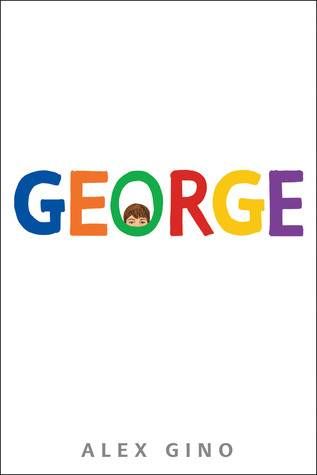
Trans Lit for Middle Grade Readers: GEORGE by Alex Gino
 George is a beautiful book.
George is a beautiful book.
I can’t fully express how relieved I am to be able to say that. From the moment I first heard about Alex Gino’s debut work I was willing to do anything to get my hands on a copy. A book about a trans girl written for an elementary/middle-school audience by an actual trans author? It was almost too good to believe. I was ecstatic, overjoyed, thrilled, full of happy tears. Once I was actually holding it in my hands however I began to get worried. What if it wasn’t a good book? What if the advance praise I had heard was all wrong and it was full of tired clichés about trans women? What if I hated the writing so much that I couldn’t in good faith recommend it to anyone? For years I had been waiting for a book like this, a book I wish I had had in elementary school, and now that it was finally here I didn’t know if I was prepared to not like it. I put off reading it for days until one night I couldn’t wait any longer and picked it up and fell in love.
Our heroine is Melissa, a fourth grader who likes playing video games, goofing around with her best friend, and going to Arnie’s All-You-Can-Eat-Buffet with her mom and brother. She’s a sweet and likable character trying find the solution to two big problems: how to get cast as Charlotte in her school’s production of Charlotte’s Web and how to tell the world she’s a girl.
One of my biggest issues with books about trans people (particularly when written by cis authors) is that they often go too far into making their book a TRANS 101 lesson to the point where it overwhelms the plot and becomes clunky and dull. While George definitely has educational moments they’re actually part of the plot. Everything that Melissa knows about trans people makes sense in the context of her being a fourth grader with access to the internet. Gino’s ability to write a sincere and believable story make this book much more accessible and engaging than a “Hi Fourth Graders, Let’s Learn About Trans People!” lecture masquerading as fiction.
For many trans people the process of coming out can be painful, dangerous, traumatic, but Gino manages to take this tough subject and weaves it with humor and joy to produce a story that can be read without needing to take breaks for your emotional safety. I think this book has the potential to show its readers, particularly trans kids and cis parents, just how much of the pain that we may associate with being trans ultimately comes from outside forces; that pain isn’t an inherent condition of being trans but rather comes from bullies, unsympathetic adults, and the ulcer-inducing stress of keeping secret your identity from everyone around you.
After I read George I couldn’t stop thinking about what this book represents. As I said before this is the first trans book I know of aimed at this age group and by an actual trans person but there’s more to it than that. This book has been published by Scholastic, a major publishing house that has the resources to get this book out there and into the hands of kids who need it. It’s also been covered in media outlets with large audiences: the Sunday Book Review of The New York Times, The Guardian, and NPR have all done favorable pieces on George.
I love George, I love Melissa, I love her story, and I love that Gino is able to write a plot that brings together Melissa’s joy and her pain. Most importantly I love that this is a book that doesn’t just fill an important void in children’s literature but that it’s a book filling the void with a great story.















